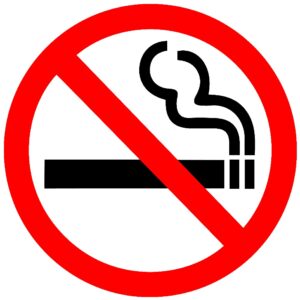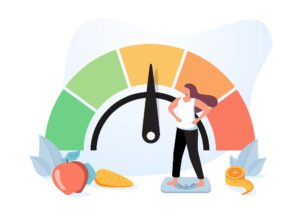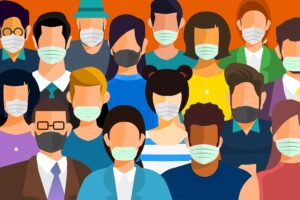 In the 20 years since the establishment of the Cheshire and Merseyside Public Health Network, now the Champs Public Health Collaborative, the health of the population and how public health policies are developed and implemented have changed considerably.
In the 20 years since the establishment of the Cheshire and Merseyside Public Health Network, now the Champs Public Health Collaborative, the health of the population and how public health policies are developed and implemented have changed considerably.
So, what is the current state of public health right now, in 2023?
Smoking is less popular than ever
 According to the Office for National Statistics (ONS), only 13 per cent of adults in England were smokers, down one per cent from the year before, and the lowest level since the ONS started recording this specific data in 2011.
According to the Office for National Statistics (ONS), only 13 per cent of adults in England were smokers, down one per cent from the year before, and the lowest level since the ONS started recording this specific data in 2011.
This is largely due to a combination of public health campaigns, increased taxes on tobacco products, and the availability of cessation services.
But vaping is on the rise
Data from the Office for Health Improvement and Disparities in the Department of Health and Social Care shows that around seven per cent of adults in England use a nicotine vape, originally a stop smoking aid, and that the popularity of disposable vaping products has increased among adults who vape, with 15.2 per cent using them in 2022 compared with 2.2 per cent in 2021. It’s now easier to vape than ever, making it very accessible to those who haven’t tried it before. This is especially worrying when considering the rise of vaping amongst younger people, with the latest stats showing that the number of 11 to 17 year olds who have tried vaping as risen from 11 per cent in 2021 to 15.8 per cent in 2022.

Healthy weight continues to be an issue
The Health Survey for England 2021 estimates that 25.9 per cent of adults in England are obese and a further 37.9 per cent are overweight but not obese. The survey, published in December 2022, found that men are more likely than women to be overweight or obese (68.6 per cent of men, 59.0 per cent of women), and people aged 45-74 are most likely to be overweight or obese.
This is a major concern, as obesity is a risk factor for a range of health conditions, including heart disease, diabetes, and certain types of cancer.
People are drinking more than ever (apart from the young)
Published at the end of 2022, the Health Survey for England reported that 21 per cent of adults in England are drinking at a level that puts them at a higher risk of alcohol-related harm (more than 14 units per week). As well as this, the Alcohol Toolkit Study found that people are drinking more than they were before the pandemic, with no sign of it dropping anytime soon. This increased level of drinking harmful amounts has led to National Institute for Health and Care Excellence (NICE) to urge GPs and health workers to have detailed conversations with their patients about their drinking habits.
However, alcohol consumption amongst younger people is falling, with the proportion of 16 to 24 year olds who reported monthly drinking falling from 67 per cent to 41 per cent from 2002 to 2019.
Number of people with high blood pressure is still too high
High blood pressure impacts more than a quarter of adults in England and a shocking 4.3 million people who have the disease go about their lives undiagnosed and untreated, which ultimately can be fatal. Of those who are diagnosed, about half are optimally treated in line with NICE guidance. This places a considerable burden on the NHS, costing an estimated £2 billion every year.
Mixed picture for screening and immunisations
The number of people taking up their offer for a screening appointment was not high enough before the pandemic, and in some areas, it’s only gotten worse. Many women are missing out on a screening appointment for cervical cancer, whilst at the same time, vaccinations for human papillomavirus (HPV) have also reduced.
However, breast screening appointments were at the highest number ever in the 2021 to 2022 financial year and the NHS wants to keep this momentum going. Bowel screening is also increasing, with the latest data showing that 70 per cent of people who are eligible take part in screening (the highest on record), but 30 per cent are not returning their test kit.

The successful COVID-19 vaccination programme means that, as of March 2023, 75 per cent of those eligible and aged 18 and over have received at least three doses of the vaccine. Flu vaccinations are also on the rise, with the number of people aged 65 and over getting their vaccine jumping from 72 per cent in 2019/2020 to 82 per cent in 2021/2022.
Childhood immunisations are also nowhere near the levels they should be. Vaccine coverage for children in 2021/22 decreased compared to 2020/21. Unfortunately, none of vaccines met the 95 per cent coverage target, including the first measles, mumps and rubella vaccine, but pneumococcal vaccines coverage at 12 months did increase compared to 2019/20.
COVID-19 and its legacy
 Three years on and COVID-19 still lingers. While vaccination rates have been high, there have been significant numbers of cases and in mid-March 2023, an estimated 1.5 million people in private households had COVID-19, the highest number of weekly infections in over two months. During this time, hospitalisations and deaths as a result of COVID-19 also increased slightly in England.
Three years on and COVID-19 still lingers. While vaccination rates have been high, there have been significant numbers of cases and in mid-March 2023, an estimated 1.5 million people in private households had COVID-19, the highest number of weekly infections in over two months. During this time, hospitalisations and deaths as a result of COVID-19 also increased slightly in England.
This news coincides with an announcement from the UK Health Security Agency that regular updates on the number of infections will no longer be published, which may lead to future uncertainty on how the disease is spreading amongst people.
The latest figures show that Long COVID (symptoms continuing for more than four weeks after the first confirmed or suspected coronavirus (COVID-19) infection that were not explained by something else) impacts two million people in the country and adversely affected the day-to-day activities of three quarters of those reporting to have the disease.
The cost of living crisis is a social crisis
Domestic and international factors have led to a dramatic rise in the cost of living, especially when considering food and fuel, and has a direct impact on peoples’ health.
Those who have the least financial resilience are impacted the most and may be forced to choose between eating food or heating their home, and many who were ‘just about managing’ are now finding themselves in need of support. The lasting consequences of this crisis have the potential to leave this generation in poorer health than their predecessors.

Mental Health and Wellbeing impacted by the pandemic
For many, the COVID-19 pandemic had a negative impact on their mental health and wellbeing, and recovering from this has been a struggle. A report from the National Audit Office found that following the pandemic, demand for mental health services is much higher than the 2019 NHS Long Term Plan anticipated, particularly among young people.
The number of people in contact with NHS mental health services increased from 3.6 million to 4.5 million people between 2016-17 and 2021-22, while the proportion of young people with probable mental disorders increased by 50 per cent for seven to 16-year-olds and more than doubled for 17 to 19-year-olds (10 per cent to 26 per cent).
Health inequalities persist
 Society is not equal and it’s getting worse. Depending on where you live, your life expectancy could be cut much shorter than it should, and your quality of life may also be impacted. Overall a third (33 percent) of Cheshire and Merseyside’s population live in the most deprived 20 percent of neighbourhoods in England, which has significant negative implications for health. Difficulties in maintaining systematic, sustainable and equitable funding for public health may also be driving these inequalities.
Society is not equal and it’s getting worse. Depending on where you live, your life expectancy could be cut much shorter than it should, and your quality of life may also be impacted. Overall a third (33 percent) of Cheshire and Merseyside’s population live in the most deprived 20 percent of neighbourhoods in England, which has significant negative implications for health. Difficulties in maintaining systematic, sustainable and equitable funding for public health may also be driving these inequalities.
#Celebrating20Years
Keep reading…
- 20 Years of the Champs Public Health Collaborative
- Spotlight on: Our Campaigns
- Blog: What’s Next? The Future of Public Health and our Collaborative’s Priorities